Last Updated on December 20, 2025 by Emma Fajcz | Published: June 12, 2019
When it comes to eating artichokes in Italy, all roads, as ever, lead to Rome.
Artichokes, carciofi in Italian, are omnipresent in Rome. You see them bundled up in restaurant windows, piled high in shops, and floating face up in buckets of water in Rome’s many vegetable markets. They have a long history in the city and feature in two of the most traditional dishes in Roman cuisine, which you will see on most menus: carciofi alla romana and carciofi alla giudia.
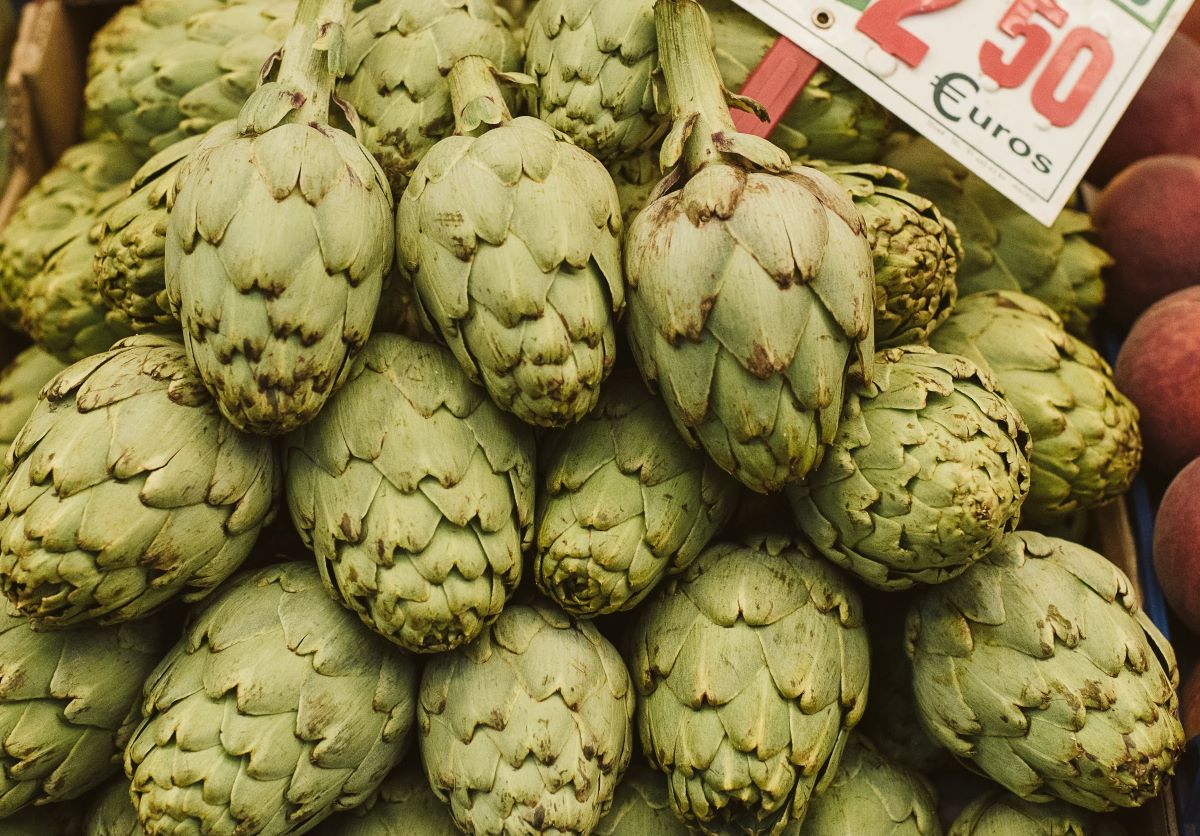
Carciofo Romanesco
Artichokes are thought to be a domesticated version of the cardoon, a vegetable with its roots in the Mediterranean. In ancient times they were cultivated in Sicily, which is where the modern Italian artichoke seems to have gotten its start. They were most likely developed and spread to the rest of Italy during the Arab rule of that island in early medieval times.
At some point, a local artichoke variety was developed in the coastal area near Rome. This cultivar became known locally as mammola or cimarolo. Elsewhere, it’s known as the carciofo romanesco (Roman artichoke), in recognition of its origins. Since 2002, romanesco artichokes, grown in a defined area, may be sold as Carciofi Romanesco del Lazio IGP, the name having protected status within Europe.
The romanesco artichoke is rounder than other cultivars and is a similar size and shape to a baseball. The outer leaves, or bracts, are softer than those of their cousins and there is no choke, the tough, inedible, fibrous center that most others have. This means that most of the artichoke can be eaten with comparatively little thrown away. As we will see, this has led to them being cooked and eaten whole.
The season for romanesco artichokes is quite short, lasting from February to April. If you eat artichokes in Rome outside this period, you are unlikely to be eating the romanesco type, although some will remain in stock through May.
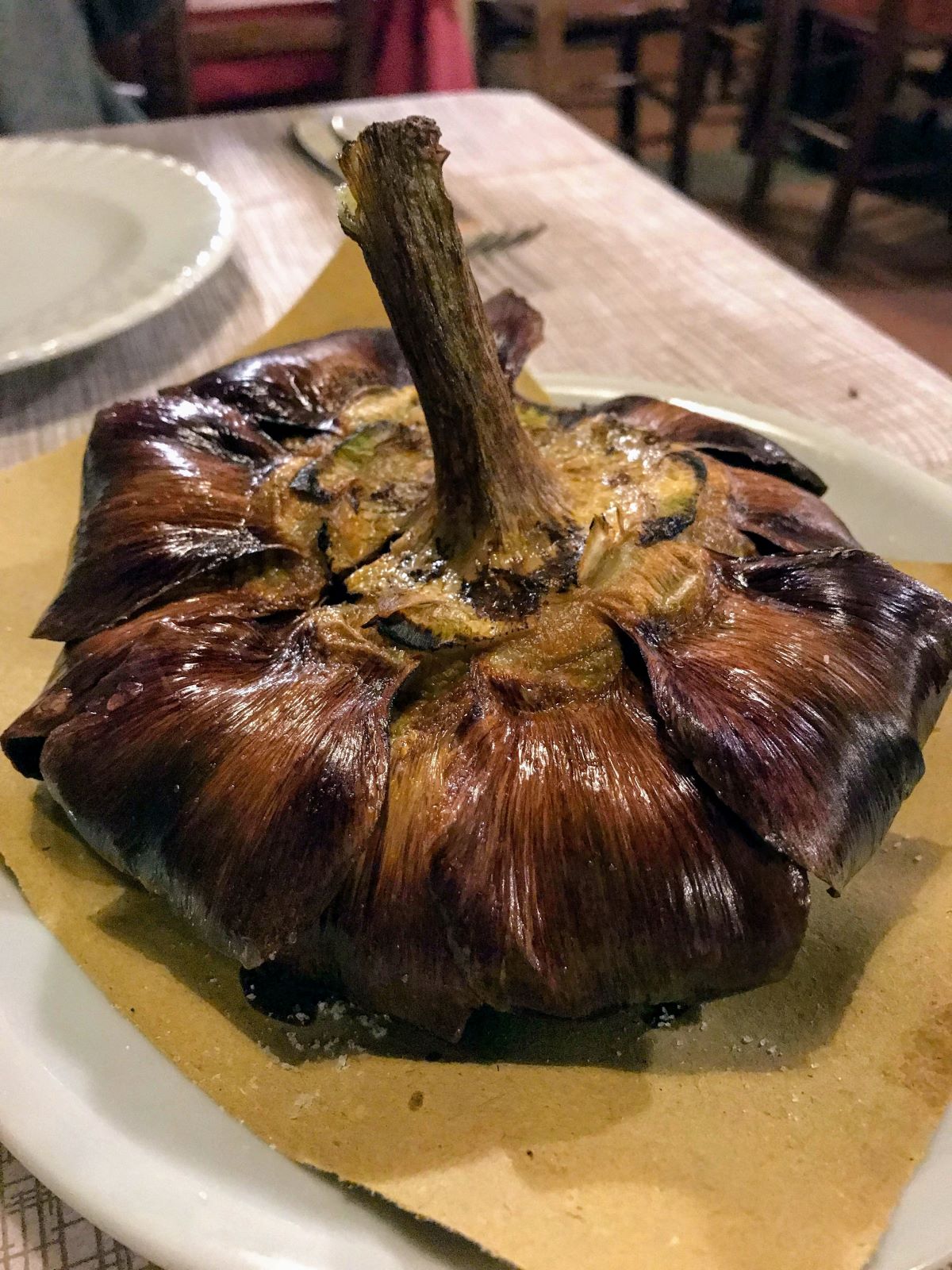
Preparation for cooking
Preparing artichokes for cooking is quite an art. It involves removing the outer bracts and then trimming the rest in a circular fashion until the artichoke looks something like a rose. You then pare the outer skin away from the stem. All the while you have to rub lemon juice on the artichokes to stop them turning brown and, when you have finished, keep them in a mixture of water and lemon juice before cooking.
Carciofi alla Giudia
Carciofi alla giudia, or Jewish-style artichokes, is a very old way of eating the vegetable which has its origin in the 16th century.
In 1555, all Roman Jews were ordered to go and live in a closed ghetto on the banks of the river Tiber, and an extraordinarily rich cuisine grew up within its walls. The area is still referred to by many as the Jewish Ghetto, though in recent years there’s been a shift towards calling it the Jewish Quarter.
Find where to enjoy an iconic Roman/Jewish dish, Carciofi alla Giudia
Once prepped following the process outlined above, the artichokes are deep-fried in oil for a few minutes until they start to turn brown. They are then taken out of the oil, drained on kitchen towels and seasoned with salt and pepper. The leaves of the artichokes are then opened up, traditionally by hitting two artichokes together, and then they are fried again. This time, water is flicked into the oil, which turns the outer leaves crispy.
Carciofi alla giudia are eaten whole. First you pick off and eat the outer leaves, which are like potato chips, and then you move on to the center, which has a rich, buttery consistency and flavor.
There’s a great video tutorial here, in which members of the Roman Jewish community demonstrate how the dish is prepared. Even if you don’t speak Italian, it’s fascinating to watch the process.
You can also find an English-dubbed version of the same recipe here.
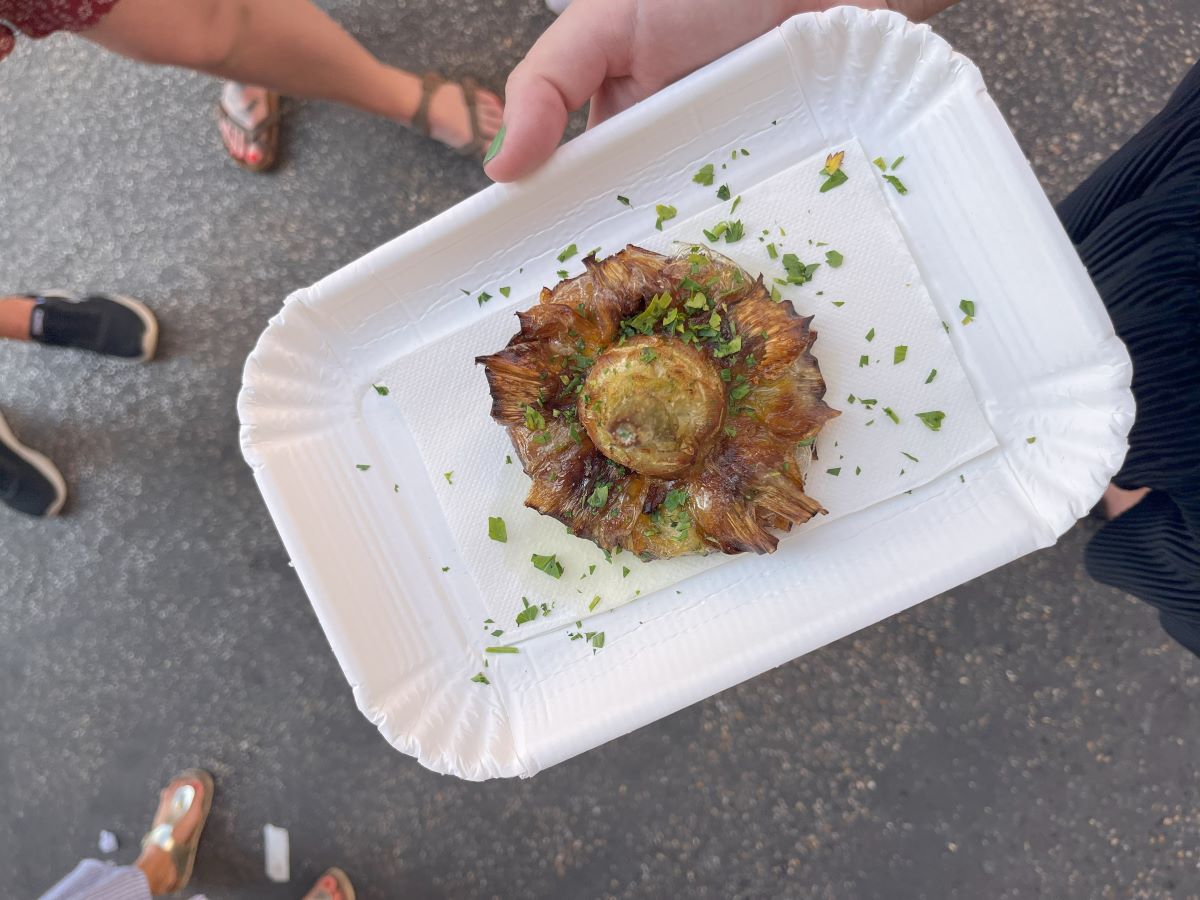
Carciofi alla Romana
Carciofi alla romana, Roman-style artichokes, don’t have as clear a history as their Jewish-style relatives. This is probably an older way of eating them though, with the “Roman” name added later to distinguish the two recipes.
Prepared artichokes are hollowed out and are then stuffed with a mixture of garlic, parsley and mentuccia (calamint). They are then slowly braised, face down, in a little water for about an hour until they are soft all the way through and have taken on the flavor of the herbs.
Whereas carciofi alla giudia are served as an appetizer, carciofi alla romana tend to come as a contorno, a vegetable side dish. If you want to try making them at home, there’s a recipe here.
So you want to try them?
These days you can find both artichokes alla giudia and alla romana on almost every menu in the city. Carciofi alla giudia are particularly fashionable, and many street food stalls now serve them. Particularly of note are those at Food Box in the trendy Mercato di Testaccio.
If you want the truly authentic experience however, you should go to the Via del Portico d’Ottavia, the center of Rome’s Jewish Quarter, and try them in any one of the kosher restaurants lining the street.
I was first taken there by my friend Massi, one of the ever-dwindling number of residents actually born and raised in Rome. He’s what Italians jokingly call a Romano DOC—a Roman of verified origin, using the abbreviation applied to wine.
“I’ve always loved coming to [this area] for carciofi alla giudia,” he told me. “It’s a place in Rome which has always had an atmosphere all of its own. Over the centuries, we Romans have not always made it easy for the Jews, so I think it’s great that a dish so closely connected with their identity has now become almost a culinary symbol for the city, which has always been, after all, their city too.”
To try carciofi alla romana, you can’t do better than Armando al Pantheon, which has been serving them and other Roman classics for more than 50 years.
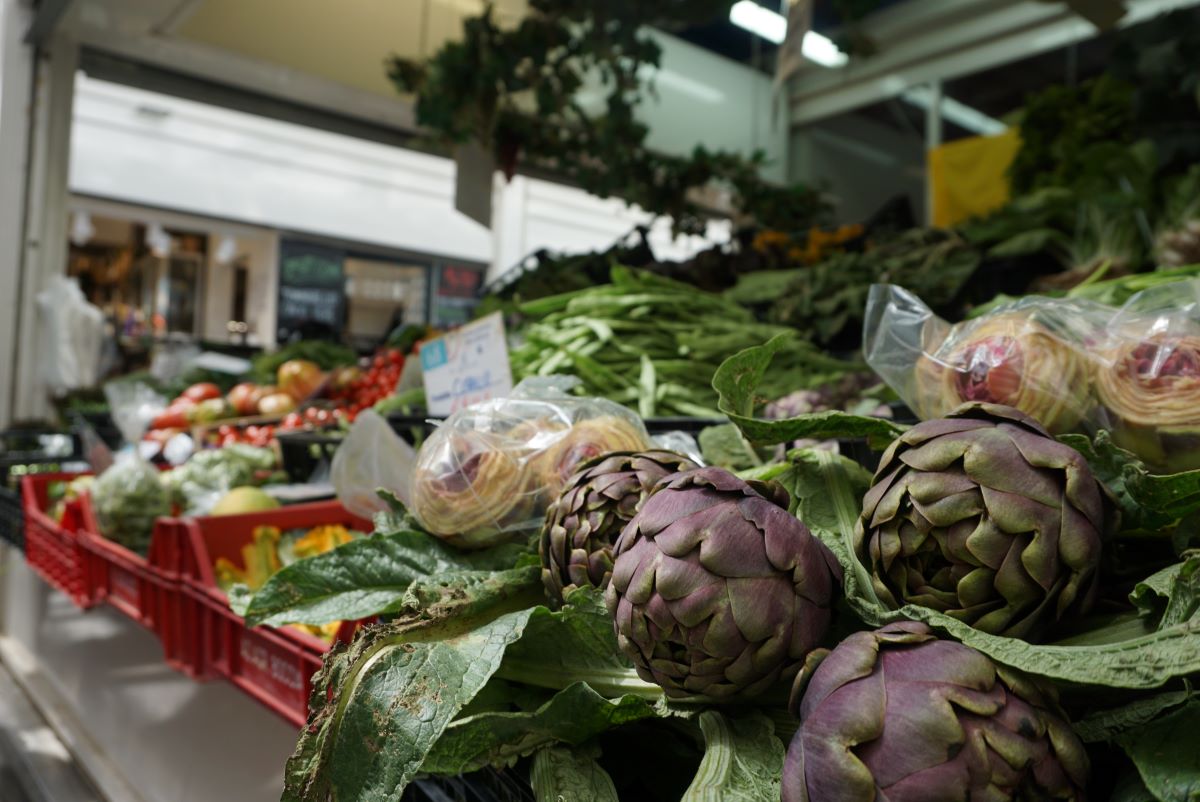
What’s next?
Roman artichokes have been cooked like this in Rome for time immemorial and, bearing in mind our culinary conservatism in Italy, this probably won’t change any time soon. Recently, however, we’ve seen them creeping into other dishes as a kind of internal fusion cuisine: carbonara with artichokes, even pizza with a carciofo alla Romana on top.
We can’t wait to see where the most Roman of vegetables pops up next.
Explore Rome’s Cuisine Like a Local
Join one of our top-rated Rome food tours! With the help of our expert local guides, you’ll get to taste the best of Rome and learn about its fascinating culinary history.


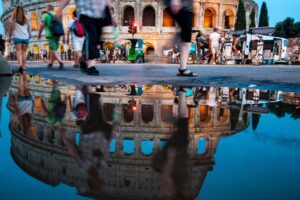






When in Rome a few years ago, we saw a man sitting in front of an outdoor restaurant in the Jewish Quarter, trimming artichokes to look just like roses. They were beautiful. I’ve been looking for an online demonstration of this technique, but haven’t found it. Do you know of one? A written description with pictures would do as well.
Thanks for sharing, Judith—sounds like you had a fantastic opportunity to watch a local artisan at work! Is the process shown here similar to what you saw? http://www.whatpippawants.com/artichoke-roses/